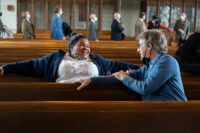Before the turn of the century there was an era of transition for filmmakers. While film schools continued to produce new talent, the independent scene gave newcomers a chance to get their films noticed and projects off the ground. Steven Soderbergh was discovered at Sundance in 1989. Quentin Tarantino swapped working at a video store for a director’s chair with Reservoir Dogs in 1992. Music video wiz David Fincher signed on to make a film in the Alien franchise in 1992. And following them, University of Texas at Austin alum Wes Anderson made a splash with his debut film Bottle Rocket in 1996. While it was not a commercial success, it did gain attention from cinephiles, with Martin Scorsese himself recognizing the talent of its filmmaker. It was in his sophomore effort Rushmore in 1998 that Anderson hit his stride as an American auteur with a distinctive, idiosyncratic style, one he would hone over the decades to come.
Rushmore centers around student Max Fischer (Jason Schwartzman). At the titular prep school, Max is a fixture among extracurricular activities and clubs but a failure as a student. Max claims early in the film that his goal in life is to find something he loves and do it for the rest of his life, and at this point he considers going to Rushmore as that passion. He befriends a local industrialist Herman Blume (Bill Murray) who is drawn to his enthusiasm and verbal wit. Blume is a depressed, middle aged successful businessman at a cross roads in life. No longer attached to his wife and resenting his twin teenage boys, he seeks a new avenue of friendship with Max and the possibility of new love. Widowed Rushmore teacher Rosemary Cross (Olivia Williams) enjoys the intellectual curious nature of Max and eventual bonds with Herman over each other’s broken hearts and weathered-but-sweet spirits. This love triangle dynamic is the dramatic focus of Rushmore.
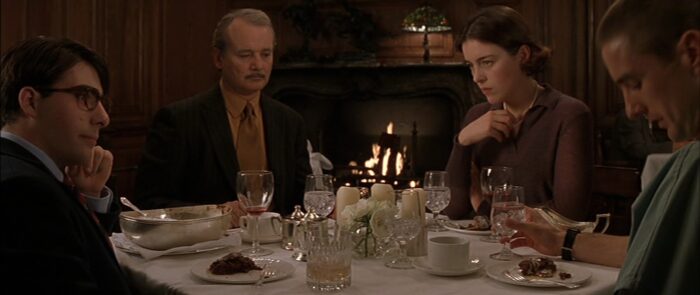
Classmates at Austin, Wes Anderson and Owen Wilson drew on a lot of their own experiences for inspiration with the Rushmore story. Principal photography took place at the prep school where Anderson attended high school. Max Fischer getting kicked out of school was inspired by Wilson’s own expulsion. Anderson based a lot of Max’s creativity on his own experience directing stage plays in high school as well. Touchstone Pictures gave the project a $10 million budget and green-lit the second feature for the young auteur. With a late 1998/early 1999 release, it gained modest box office success but was reviewed very favorably among critics. It was well respected at the Toronto International and Telluride Film Festivals, and Anderson was awarded Best Director at the Independent Spirit Awards with Bill Murray garnering a Best Supporting Actor nomination at the Golden Globes.
The biggest impact when looking back on Rushmore is seeing the start of the Wes Anderson/Bill Murray collaboration. Murray was thought of at the time as a successful screwball comedic actor who was appreciated in the 1980s and early 1990s but his creative genius was running stale. We know now with films like Rushmore and the 2003 Sofia Coppola film Lost in Translation he would have a second wave of success as an understated dramatic actor. Murray would go on to star in the 2004 Wes Anderson film The Life Aquatic with Steve Zissou as well as be a staple character actor in ever growing ensemble casts, eventually featuring in ten films for Anderson.
Casting Max Fischer would be the most important thing to make Rushmore work, and Jason Schwartzman was the right man for the job. Being the nephew of legendary filmmaker Francis Ford Coppola and son of actor Talia Shire, Schwartzman wasn’t exactly plucked out of obscurity but his fit in the role is ideal. Rushmore would be the break through Schwartzman needed, and he too would be a staple in the casts of future Anderson ventures. He has appeared in a total of seven Anderson features, bookended as the lead roles in Rushmore and 2023’s Asteroid City. The rest of the cast for Rushmore would include established actors at the time Brian Cox, Olivia Williams, and another long-time Anderson collaborator, Luke Wilson.
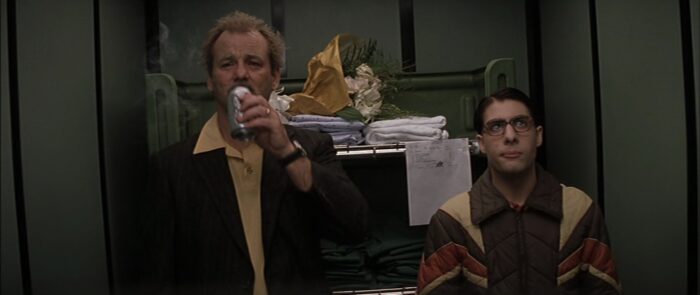
The strength of Rushmore is in the flawed nature of the characters and a more confident Wes Anderson, whose distinct style begins to emerge. Max Fischer is a boy pretending to be a man, a walking contradiction of a determined but lost soul. Forced to move on in life without his mother, he pretends to be greater than he actually is. Forming and leading various school clubs, he builds distractions instead of fixing himself and moving on in life. He is an easy person for equally broken Herman Blume to befriend. Herman admires how Max mixes his ambition and passions, also the time in life he has ahead of him. It is also no surprise that they each take a liking to Rosemary. She is kind and an intellectual, attracting both a boy without a mother and a grown man looking for equal companionship.
The love triangle acts as the driving force and main conflict. The debut performance for Schwartzman was a perfect match for Murray as he redefined his skill and taste in collaborators. Anderson gives each character time to show off their cleverness, vulnerability, and flaws. While Max and Herman can be charming and friendly to each other and to love interest Rosemary, it can also turn destructive. Looking at the Max and Rosemary “relationship” from a 2024 lens is a bit jarring. Anderson handles the writing and acting for that situation carefully in 1998, knowing the implied immaturity and unprofessionalism. Max’s delusions regarding the situation are a built-in character flaw that luckily irons itself out as he evolves in the film.
A criticism of Anderson’s work is that he makes the same film over and over again. There may be some validity to that, but his affinity for centering his heightened realities around broken people is evident and required for character catharsis. Stylistically, Rushmore would show him growing comfortable with visual trademarks. Widescreen compositions are often symmetrical and precise, camera movements frequent and recognizable. Whether it be a dolly in-out, or a tracking shot besides a character, you know you’re watching a Wes Anderson film (with Robert Yeoman as cinematographer.) Rushmore is a brisk and efficient 93 minutes in duration, with nods to French New Wave montages littered throughout. It’s no wonder why Scorsese likes Anderson’s work, as he uses The Rolling Stones (Scorsese trademark), Cat Stevens, and John Lennon in the musical soundtrack for dramatic emphasis. His use of slow-motion speed design mid-shot would become a trademark scene in all of his films. The film was meticulously written, shot, and edited through the young mind of Wes Anderson, his having made two feature films before turning 30 years old.
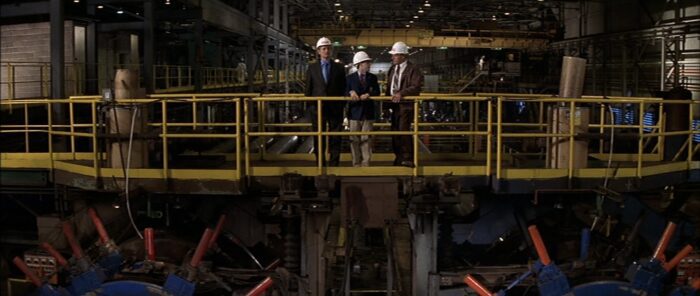
Many of these trademarks would be used in Anderson’s filmography as it evolved. With Rushmore, he and Owen Wilson have stated they wanted to make a contemporary Roald Dahl film based in a high school. Ironic since they would later collaborate in 2009’s Dahl adaptation Fantastic Mr. Fox and Anderson would direct an anthology of Dahl adaptations. Rushmore anticipates the aesthetic of Bottle Rocket, The Royal Tennenbaums, The Life Aquatic with Steve Zissou, and The Darjeeling Limited all deal with themes of broken character seeking friends and family among misfits. Stories involve the thrusting into established worlds, those that the keen eye of the creator have carefully built. All these films have a contemporary style to them which gives them grounded weight but still a world unique to Anderson’s creation.
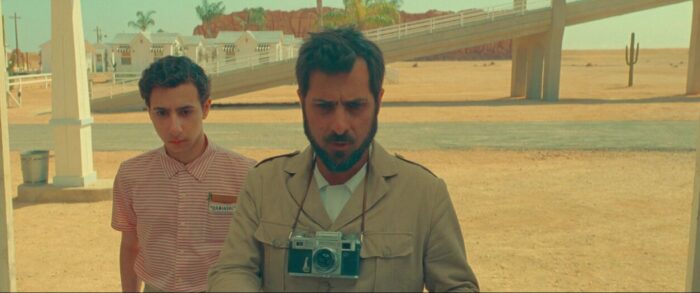
Wes Anderson’s second wave has gotten even more stylized. From Fantastic Mr. Fox to Asteroid City, his production design and compositions have gone to a higher stylized projection of his dollhouse storytelling. Perhaps it was his work on animated feature and short films, but he has retreated away from contemporary stories for totally controlled fictional worlds. The evolution is a fascinating one, but the contrast of his second feature Rushmore with Asteroid City is night and day. Some critics of Anderson’s work even say his characters have gotten more wooden and robotic. The humor has gotten somewhat drier in his films, but the character archetypes all draw back to his early work.
Rushmore is and always has been one of my favorite works from Wes Anderson. It’s simple yet detailed, technically sounds but touching and funny. The reputation for the film is evident, with it being added to the Criterion Collection just two years after its release. While the filmography of Wes Anderson would almost entirely be recognized and featured by Criterion, Rushmore was the film that put his work into that conversation. It marked the turning point in Bill Murray’s career, forever changing his reputation as an actor and stapling him to one of the defining filmmakers of the new century. It kickstarted the career of Jason Schwartzman as an actor and collaborator with Anderson. And most of all, it opened the door for Wes Anderson to develop into a filmmaker whose style and sensibilities are as unique and identifiable as any’s.


